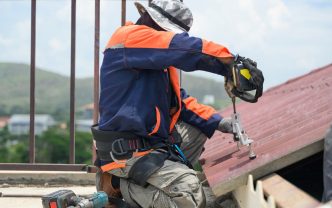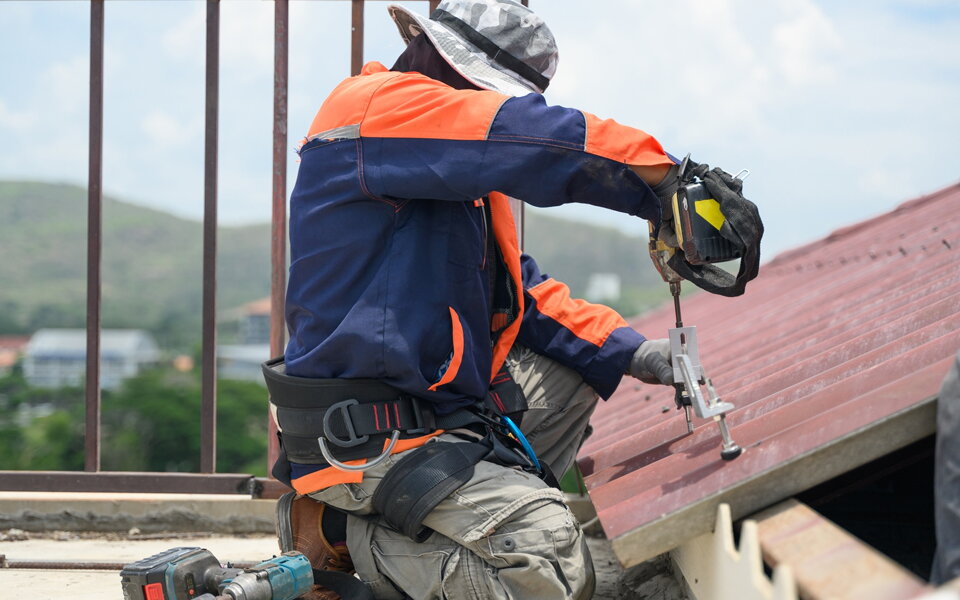Why Your Roof’s Material Sets the Stage
Home roofs are shields, statement pieces, and silent energy savers. Your choices affect how your home handles weather, your utility costs, and how often you climb ladders for maintenance. Different materials excel in budget, durability, style, and sustainability. Understanding those trade-offs makes your choice smarter, calmer, and even more pleasurable.
Asphalt Shingles: The Versatile Crowd-Pleaser
Asphalt shingles dominate American neighborhoods for good reason. They’re affordable, adaptable to countless home styles, and quick to install, which keeps labor costs down and timelines tight. You’ll find them in a rainbow of colors, in basic three-tab profiles or dimensional architectural styles that add depth.
- Advantages: Budget-friendly, fast installation, wide aesthetic range, decent lifespan (often 15–30 years).
- Considerations: Shorter life in harsh climates, petroleum-based composition, and more frequent replacement than premium options.
- Best for: Budget-conscious homeowners who want a clean look, easy repairs, and plenty of color choices.
Metal Roofing: Sleek, Strong, and Weather-Ready
Metal roofing—whether steel, aluminum, copper, or zinc—brings a modern edge and serious staying power. It reflects heat, which can lower cooling costs, and it shrugs off snow, wind, and rain like a seasoned pro. Many metal roofs incorporate recycled content and are fully recyclable at the end of their long life.
- Advantages: Exceptional longevity (often 40–70 years), energy-efficient, recyclable, and tough in extreme weather.
- Considerations: Higher upfront cost, specialized installation, and potential noise during storms (mitigated with insulation).
- Best for: Homes in stormy or snowy regions and owners who value a contemporary look, durability, and eco-forward design.
Clay and Concrete Tiles: Timeless Character with Serious Staying Power
Clay and concrete tiles deliver that sun-drenched Mediterranean charm—rich texture, classic curves, and an unmistakable presence. Beyond looks, they’re non-combustible, low maintenance, and can endure for decades with proper care.
- Advantages: Iconic style, very long lifespans (often 50–100 years), fire resistance, and minimal upkeep.
- Considerations: Heavy weight requiring structural support, higher material and installation costs, and a more specific architectural fit.
- Best for: Warm-climate homes and designs inspired by Spanish, Mediterranean, or Mission aesthetics.
Wood Shingles and Shakes: Rustic Warmth, Naturally
Wood shingles and shakes feel handmade and organic, perfect for cottages, historic homes, or wooded settings. The texture is unmistakable, the tone is warm, and the curb appeal is off the charts when well maintained.
- Advantages: Beautiful, natural appearance; biodegradable; moderate lifespan (often 25–30 years with care).
- Considerations: Maintenance is key—think treatments to fend off moisture, mold, or rot; not ideal in fire-prone areas unless treated; pricier than asphalt.
- Best for: Homeowners craving a classic, woodsy aesthetic and who are comfortable with regular upkeep.
Slate Roofing: The Luxury Benchmark
Slate is the granddaddy of roofing—stone, elegant, and famously long-lived. When expertly installed, slate can outlast generations, delivering both gravitas and resilience. It’s stunning on historic properties and upscale designs that demand substance.
- Advantages: Exceptional longevity (often 75–100+ years), natural beauty, fire resistance, and durability in extreme conditions.
- Considerations: Very heavy, requires structural reinforcement, expensive materials and installation, and limited pool of skilled installers.
- Best for: High-end or historic homes where investment, craftsmanship, and aesthetic weight take center stage.
Synthetic Roofing: Big Looks, Lower Weight
Today’s synthetic roofing materials are engineered to mimic slate, wood, or tile—minus the heavy weight and some of the maintenance. They can be convincing to the eye, kinder to the roof structure, and easier on the budget compared to their natural counterparts.
- Advantages: Lightweight, durable, customizable aesthetics, and often more cost-effective.
- Considerations: Lifespan varies by product, and sustainability depends on the manufacturer’s practices.
- Best for: Homeowners seeking the look of premium materials without structural upgrades or top-tier price tags.
Choosing What Fits: Climate, Budget, and Style
Start with your climate. Metal thrives in heavy snow and wind; clay loves the warmth; asphalt holds its own in mild to moderate conditions; slate is a fortress in nearly any weather. Next, align the upfront price with the long view: asphalt wins short-term savings, metal and slate win durability. Consider your home’s structural capacity—heavy materials like slate or tile may require reinforcement. Then weigh your aesthetic goals: do you want modern minimalism, coastal charm, or classic European flair? Finally, think about how long you plan to stay put. If you’re in for the long haul, investing in a roof with a half-century lifespan can pay off in peace of mind and resale value.
Why Installation Quality Changes Everything
Poor installation destroys even the greatest materials. Hidden factors like flashing, ventilation, underlayment, and fasteners keep a roof tight and dry. Choose a reputable contractor and insist on certifications, guarantees, and clear communication from the start. A careful install prolongs life, prevents leaks, and safeguards your investment.
FAQ
How long should a new roof last?
It depends on material and climate; asphalt often lasts 15–30 years, while metal, tile, and slate can stretch from several decades to over a century.
Is metal roofing noisy during storms?
It can be, but proper insulation and underlayment significantly reduce sound to levels similar to other roofing types.
Do heavier materials require structural upgrades?
Yes, roofs carrying clay, concrete, or slate often need additional support, which should be assessed by a professional.
Are asphalt shingles environmentally friendly?
They’re petroleum-based and less eco-friendly than metal or some synthetics, but recycling programs for shingles are expanding in many areas.
Can synthetic roofing look like real slate or wood?
High-quality synthetics convincingly replicate natural textures and profiles while staying lighter and easier to install.
What affects roofing costs the most?
Material choice, roof complexity, structural needs, and labor rates drive price, with installation quality being a smart place to invest.














